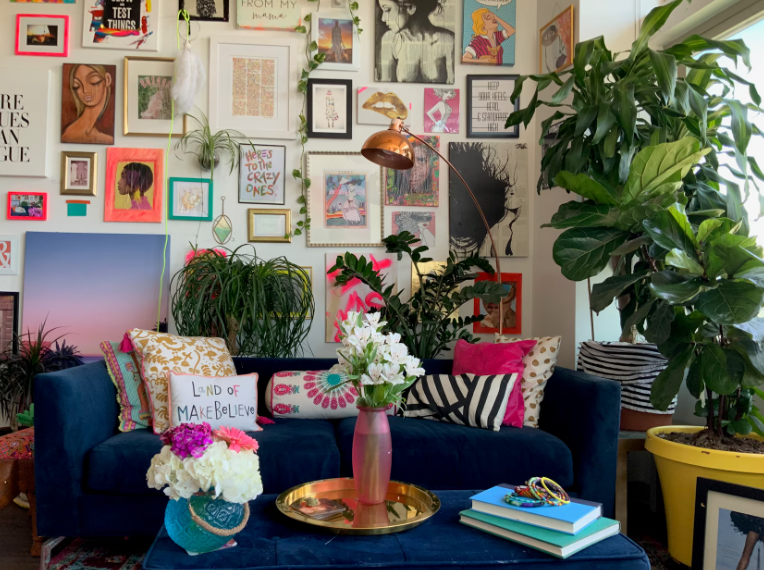
Moving into a new house is an exciting adventure, brimming with opportunities to infuse your personality into your space. It’s a chance to start fresh, explore new styles, and create an environment that feels uniquely yours. Whether you’re aiming for a cozy retreat or a sleek modern abode, the process of decorating can seem daunting. Fear not! This guide offers practical tips to help you confidently approach decorating your new home, ensuring each room reflects your taste and lifestyle.
Understand Your Space
Every home has its unique quirks and features. Before leaping into decoration, take time to understand the layout and natural lighting of your home. Consider how the sunlight enters through the windows during different times of the day. This awareness will guide your choice of colors and materials, helping to create a harmonious atmosphere.
Evaluate the size and shape of each room. Smaller spaces may benefit from lighter colors and multi-functional furniture to avoid feeling cramped. Conversely, larger rooms offer more flexibility for color experiments and furniture arrangements. This understanding forms the foundation of a well-coordinated home.
Consider the flow between rooms. Open floor plans may require a cohesive color palette to ensure a seamless transition between areas. Rooms with more separation allow for distinct themes in each space. This preliminary assessment sets the stage for a cohesive and functional design.
Choose a Color Palette
Selecting the right color palette is key to setting the mood in your home. Neutral shades like whites, beiges, and grays create a calm and timeless backdrop, allowing your furniture and decor to shine. These colors are perfect for those who frequently update their decor, providing a versatile base.
For those unafraid of bold choices, vibrant hues can add character and personality. Consider the psychological effects of colors; blues often evoke serenity, while reds energize a space. The goal is to choose colors that reflect your personality and make you feel at ease.
Combining colors harmoniously is crucial. Use the 60-30-10 rule as a guideline: 60% of a dominant color, 30% of a secondary color, and 10% for an accent. This ratio helps maintain balance while allowing you to introduce pops of color in a controlled manner.
Define Your Style
Your home should be a reflection of your style. Take time to explore different interior design styles to see what resonates with you. Whether it’s minimalist, bohemian, industrial, or traditional, understanding your preferences helps in making cohesive choices.
Look for inspiration in magazines, online platforms, or home decor shows. Create mood boards to visualize how different elements come together. This process allows you to experiment with combinations without committing, helping you refine your style further.
Choose Furniture Wisely
Furniture is a significant investment and a key component of any home’s aesthetic. Prioritize comfort and functionality when selecting pieces. A comfortable sofa is vital for relaxation, while a sturdy dining table serves as the heart of family gatherings.
Consider the scale of furniture in relation to the room. Oversized furniture can overwhelm a small space, while smaller pieces may get lost in a large room. Choosing the right size of furniture ensures that your space is both functional and aesthetically pleasing.
Opt for timeless pieces that will stand the test of time. Trendy items can be fun, but classic furniture ensures longevity and adaptability as your style evolves. Investing in quality pieces saves money in the long run.
Incorporate Art and Decor
Art and decor are personal touches that bring life to a space. Choose pieces that resonate with you, whether they are paintings, sculptures, or photographs. They should reflect your interests and experiences, adding a personal narrative to your home.
Consider the scale and placement of art. Large pieces can be statement-making when placed correctly, while smaller works can be grouped to create a gallery wall. Having artwork professionally framed by a service like Picasso Gallery Custom Framing is a fantastic way to enhance its presentation, allowing you to choose materials and styles that complement both the piece and your home’s overall decor. Use art and frames to draw attention to certain parts of a room or to create focal points.
Don’t overlook the power of decor items like vases, books, or plants. These smaller elements can be easily updated to refresh your space with minimal effort. They also offer opportunities to introduce seasonal themes or color accents.
Maximize Natural Light
Natural light enhances the ambiance of a room, making it feel open and inviting. Make the most of available sunlight by choosing light, airy curtains or blinds that allow light to filter through. Mirrors can amplify light, reflecting it around the room.
Position furniture to take advantage of the light. Place workstations or reading nooks near windows to benefit from daylight. Consider the orientation of your home and how light changes throughout the day, adjusting your layout accordingly.
Add Greenery
Plants breathe life into a home, offering both aesthetic and health benefits. They purify the air and add a pop of color, creating a soothing and natural vibe. Choose plants that suit your lifestyle and the conditions of your home.
Group plants of varying heights for visual interest. Tall plants like fiddle leaf figs make a bold statement, while smaller succulents can adorn shelves or windowsills. Consider using plant stands or hanging pots to diversify placement.
If you’re not naturally green-thumbed, start with low-maintenance plants like snake plants or pothos. These are resilient and thrive in various conditions, offering a sense of accomplishment as you grow your indoor garden.
Decorating a new house is an opportunity to explore creativity while crafting a space that feels like home. Understanding your space, choosing the right colors, and selecting quality furniture form the foundation of a beautifully decorated home. Incorporating art and maximizing natural light add depth and personality while greenery creates a welcoming environment.


